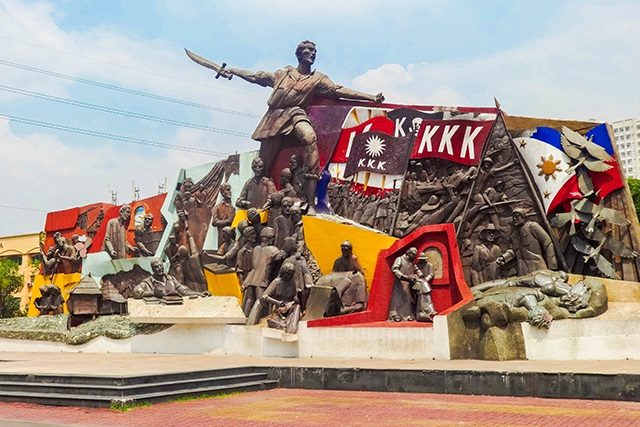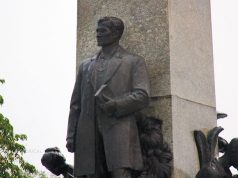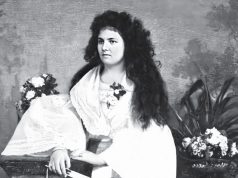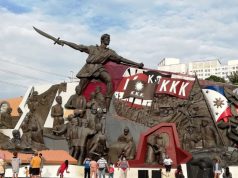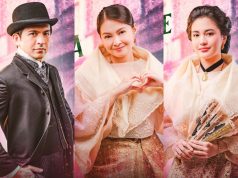Filipinos commemorated the 155th birthday of Andres Bonifacio by sharing on social media some facts that debunked misconceptions about the life of the father of the Philippine Revolution against Spain.
Bonifacio was born on November 30, 1863 in Tondo district in the city of Manila.
History textbooks portrayed Bonifacio as an uneducated, poor, Filipino native or indio who wore a camisa de chino and brandished a bolo in one hand.
Posts about Bonifacio on the commemoration of his birthday, however, claimed this image of him as inaccurate.
Others shared little known details about the hero such as being a part-time theater actor and his dressing up as a Filipino woman as camouflage during the Filipino-Spanish war.
Did you know that Andres Bonifacio once to cross-dressed as a woman during his time to fool & get past the Guardia Civil at Balintawak
AND he did this while concealing a bolo which later on he made his friend keep for him
Get you a man who breaks gender roles and is badass 💞😩
— Gabrielle (@gabiersss) November 30, 2018
Prior to the founding of Katipunan, Andres Bonifacio was a part-time theater actor who appeared in several moro-moro plays. He often played the role of Bernardo Carpio, a fictional character in Tagalog folklore. #HabaduBonifacio #BonifacioDay
Source: https://t.co/J6h8aVd1IY pic.twitter.com/GbtcrG6IIQ
— amanda (@amanda_gorreon) November 30, 2018
Bonifacio Day is commemorated on February 16, 1921 by virtue of Republic Act No. 2946. On February 23 of that year, Republic Act No. 2760 ratified all necessary steps to create, maintain and improve national monuments to his memory.
Bonifacio’s life before Katipunan
Two foreign scholars, Jonathan Fast and Jim Richardson, wrote in their 1979 book titled “Roots of Dependency: Political and Economic Revolution in the 19th Century” that Bonifacio is a mestizo or a Filipino with mixed race, not an indio.
They described his mother Catalina de Castro as a Spanish mestiza while his father Santiago Bonifacio is a Filipino.
Bonifacio was born and grew up in a street called Calle Azcarraga, which is the present-day Claro M. Recto Avenue, in Tondo, Manila.
According to historian Teodoro Agoncillo’s 1956 titled “The Revolt of the Masses,” Calle Azcarraga was home to the poorest families that time.
Fast and Richardson, however, found records that tell their parents were able to give Bonifacio proper education when they were still alive. Santiago also once served as a teniente mayor of Tondo.
The scholars stated that Bonifacio was first taught by private tutors.
Celebrated author Sylvia Mendez Ventura said in her book “Supremo: The Story of Andres Bonifacio” in 2002 that Bonifacio was later self-educated through reading at work.
Those he read during lunch time include the Bible, books of French writer Alexander Dumas, Jose Rizal’s Noli Me Tangere and El Filibusterismo and different law and medical books.
Their parents died of tuberculosis when he was 14 years old. Being the eldest, Bonifacio had to take many jobs such as peddling paper fans and canes, a messenger and a theater performer to support the family of six.
He also got employed in two foreign companies, Fleming and Company and Fressell and Company, and held many positions there.
Fast and Richardson believed that Bonifacio must be an important person to be hired in two foreign firms back then.
In 1892, he married his second wife, Gregoria de Jesus, whose father was a gobernadorcillo or governor of Caloocan. His first wife, Monica, died of leprosy just a year after they were married.
Many accounts tell his marriage to de Jesus uplifted his social status to middle class.
While many monuments of Bonifacio showed him yielding a bolo, he was primarily a writer in the propaganda movement established by Rizal.
He was a member of La Liga Filipina and wrote in its official newspaper La Solidaridad.
On July 7, 1892, Bonifacio and the members of La Liga Filipina convened to form the Kataastaasan, Kagalanggalangang Katipunan ng mga Anak ng Bayan or Katipunan when Rizal got arrested and deported to Dapitan.

